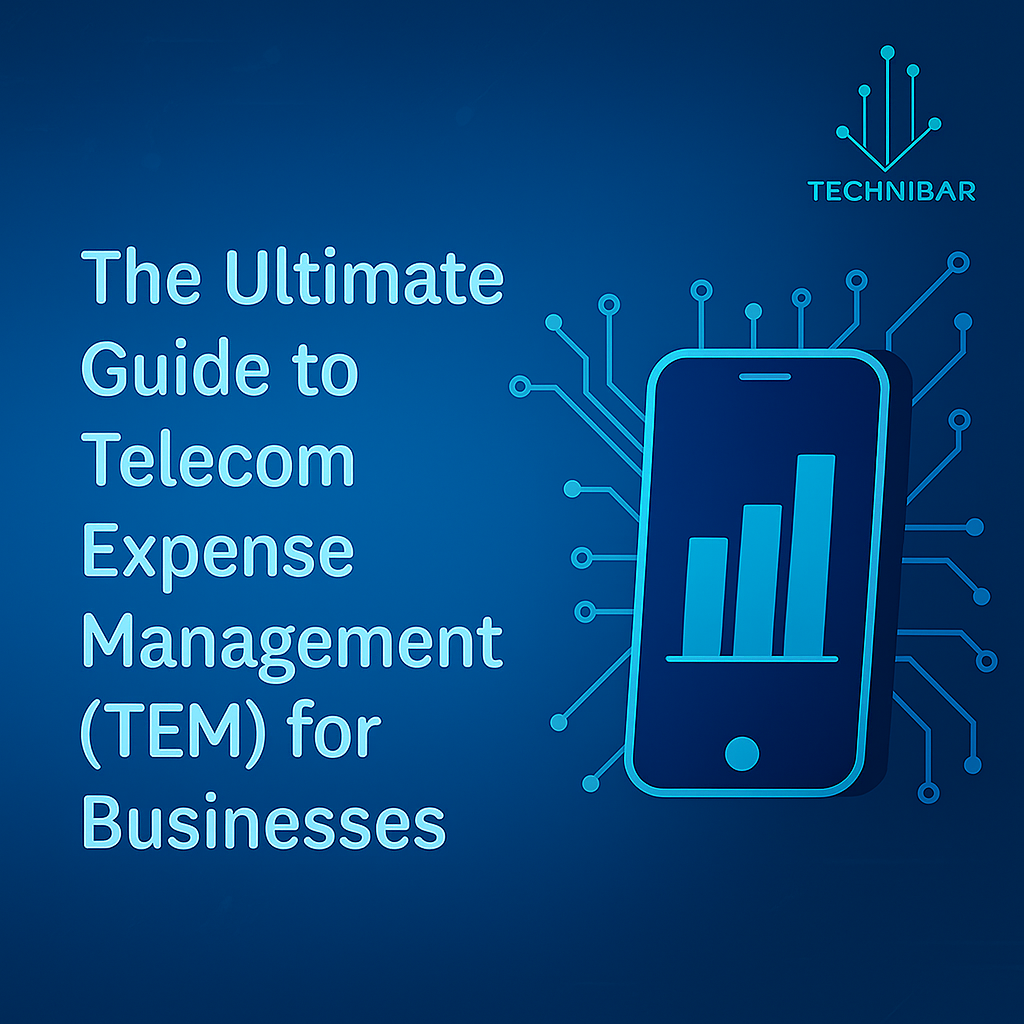The whole aggregate of processes, services and tools dedicated to all aspects of managing.It streamlining the telecommunications costs of an organization is called Telecom Expense Management (TEM). It includes voice, data and wireless services. VoIP, and conferencing systems TEM offers platform-level control over hundreds and thousands of IT-related telecom assets of corporations. It keeps expenses down, efficiency up and compliance guaranteed.
The Reasons to Use TEM
One of the biggest non-payroll items of the enterprise can be telecommunications. In the absence of effective control. It organizations can considerably waste their money. On the unutilized services, billing problems, out-of-date contracts and ineffective vendor management. The problems that TEM addresses are through providing:
- Transparency of funding by department, services and worldwide locations.
- Checking of errors, duplicate bills, incorrect billing etc.
- Maximum contract management, and vendor bargaining.
The ability to be agile when it comes to operations. It grow with the number of employees and the new telecom services that pop up
Plan Components & Process Flow
1.Inventory Management
It is building on ensuring accurate records of all telecom devices -SIM cards, phones, circuit, and IoT sensors. This makes billing to be in line with real assets.
2. Invoice Auditing Dispute Management
TEM tools read in and audit invoices line by line comparing use to contracts and highlighting anomalies. The workflows of dispute management aim at corrections or credits through vendors .
3.Vendor Oversight Contract Negotiation
Through the knowledge of the TEM providers, the organization can create desirable conditions in contracts, prevent undesirable auto-renewals, and check on the performance of the vendors against SLAs
4.Cost Allocation and Reporting
TEM platforms allow the department, location, and type of service bunk costs in an open manner- which helps in improved budgeting and accountability
5.Providing and Decommissioning
When coupled with provisioning systems TEM tools can monitor the lifecycle of devices, thus new services are ordered and dormant assets are cleaned up in a timely fashion .
6. Continuous Improvement & Optimization
Usage analytics implemented by TEM help in observing chances of right-sizing, getting rid of duplicate services, and transferring to lower-cost options such as SD-WAN or 5G
7. Risk and Compliance Management
TEM guarantees the security and regulatory issues in telecom (e.g. Access policies, data encryption) that lessen the organizational effort risk.
Best Advantages of TEM
1. Significant Asset Conservation
Approximately one in every three telecom invoices have errors- with telecom expense audit wallowing back overbills and pork-barrel spend, leading to big savings
2. Improved Financial Disclosure
With TEM tools, there is an available real-time dashboard to spend by user, department, service, or region, which enables strategic decisions.
3. Operational Efficiency
With automation of invoice processing, asset tracking and dispute resolving, the IT teams are then free to work on other projects outside of telecom management
4. Inventory Control
Do not pay the money, which is not spent on unused devices because the tracking with the assets and active services are centralized.
5. Better Relationship with Vendors
The TEM experts negotiate on lower prices, manage the vendor commitments, negotiate in multi-carrier landscapes to the best terms.
6. Compliance and Risk Reduction
TEM helps in enhancing regulatory compliance by doing frequent audits, security reviews and life cycle management.
7. Scalability Future-proofing
Incorporation of TEM will help organizations better adjust to the growth of services and new technology and changing business demands.
TEM-Technology Expense Management (TEMg)
Conventional TEM targets telecom services phone, mobile, circuits, data plans Technology Expense Management (TEMg) expands management to software (SaaS) and Cloud, as well as wider IT infrastructure expenditures. Organizations that use complicated tech organization will surely intend to utilize TEMg to embrace overall financial control
Real Life Applications
After TEM was deployed, a global retailer saved 25 percent of its telecom outlay; this was achieved through auditing, right sizing services, correction of errors, and renegotiating vendor contracts.
- One healthcare network was able with TEM to monitor thousands of IoT-enabled devices and realize over-recovered overcharges of $500k within one year.
- A business organization automated lifecycle management to end up with a 90% reduced month-end error bills due to streamlined machine-provisioning.
Selecting the appropriate TEM Approach
1. In-House Referring to the Outsourced Solutions
In-house TEM is under control, but it costs workforce and tooling.
Outsourced TEM offers competence, best practice and vendor leverage. It is frequent to be charged either through the sharing of savings or fixed charges
2. Look for: Combined audit engine
- Real-time dashboards
- Contract and Asset tracking
- Automated dispute and providing processes
- Tools of vendor management
3. Transparency in Cost Model
- Know if it is billed:
- Subscription/license fees
- The transaction based auditing charges
- Performance fees that are based on savings
4. Security Compliance
Make certain ISO, SOC, or other certifications, as well as the safe storage of invoice and user data.
5. Vendor Reputation
Look for serious suppliers and vendors with records of savings and customer testimonials and some certifications in the industry.
The Trends Of Today in TEM
AI / Predictive Analytics:
Artificial intelligence platforms now predict usage and prime them in proactive rightsizing.
IoT and 5G Growth:
Using SIM enabled devices within IoT, TEM services to handle these subscriptions are fundamental .
Holistic TEMg Adoption:
Unifying the telecom and IT expense platform to get all technology spent on one roof
Conclusion
Telecom Expense Management is an effective system of justifying management of one of the biggest underground cost buckets of organizations. Due to its high levels of visibility, auditing, vendor leverage and automation of its operations, TEM bears quantifiable ROI in terms of cost savings and strategy. However, it can be successfully implemented only in case of proper planning including the choice of the platform, partners, and governance framework.
Both in-house and outsourced, TEM enables businesses to gain back the budget, exert better efficiency, and be agile in the face of technological changes.
FAQS
1. What is TEM?
Answer: Telecom expense management (TEM) consists of the management, tracking, and optimization of the costs of telecommunication services which a company uses. It also entails inventory monitoring, auditing of invoices, contracts, cost apportionment as well as the monitoring of different vendors in order to minimize waste and ensure visibility.
2. What is the use of Telecom Expense Management to businesses?
Answer: Billing mistakes, having unused lines and outmoded contracts always make business spend more money than is necessary to pay its telecom expenses. TEM can eradicate all these, and identify potential areas of cost-saving, and it can keep the telecom services in line with business requirements and budgets.
3. What do TEM solutions normally offer?
Answer: A full TEM solution entails:
- Error finding and invoice checking
- Inventory and assets management
- Contract and vendor management
- Reporting and allocation of costs
- Services provision and decommissioning
- Policy enforcement and compliance
4. Is Telecom Expense Management possible to outsource?
Answer: Indeed, a variety of companies resort to outsource TEM to better providers. These service providers employ software and professional analysts to better control the expenditure on telecommunication costs and better bargain with the providers on behalf of the business.
5. Which are the companies that are most competitive in TEM?
Answer: The biggest beneficiaries are the large enterprises and multi-location organizations. The most advanced beneficiaries are those companies that have high telecom requirements or telecom infrastructure customizations. Nevertheless, TEM can be applied in any company that aims to manage telecom expenditures and enhance the efficiency of operation.









